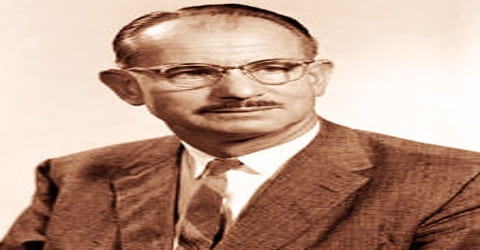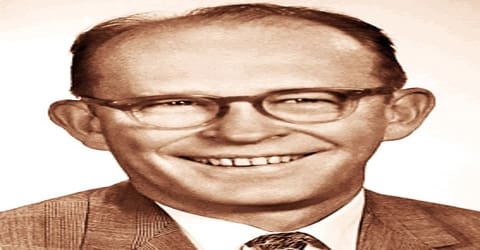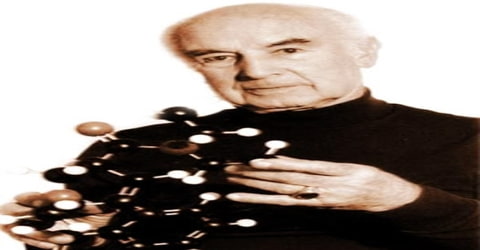Biography of Edwin McMillan
Edwin McMillan – American physicist.
Name: Edwin Mattison McMillan
Date of Birth: September 18, 1907
Place of Birth: Redondo Beach, California, United State
Date of Death: September 7, 1991 (aged 83)
Place of Death: El Cerrito, California, United State
Occupation: Physicist
Father: Dr. Edwin Harbaugh McMillan
Mother: Anne Marie Mattison
Spouse/Ex: Elsie Walford Blumer (m. 1941)
Children: Ann Bradford, David Mattison, and Stephen Walker
Early Life
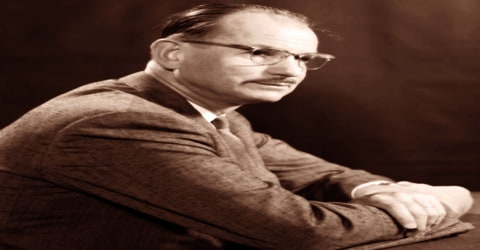
An American nuclear physicist who shared the Nobel Prize for Chemistry in 1951 with Glenn T. Seaborg for his discovery of element 93, neptunium, the first element heavier than uranium, thus called a transuranium element, Edwin McMillan was born in Redondo Beach, California, U.S. on September 18, 1907, the son of Edwin Harbaugh McMillan and his wife Anna Marie McMillan née Mattison. A graduate of California Institute of Technology, he earned his doctorate from Princeton University in 1933 and joined the Berkeley Radiation Laboratory, where he discovered oxygen-15 and beryllium-10. During World War II, he worked on microwave radar at the MIT Radiation Laboratory, and on sonar at the Navy Radio and Sound Laboratory.
In 1942 McMillan joined the Manhattan Project, the wartime effort to create atomic bombs, and helped establish the project’s Los Alamos Laboratory where the bombs were designed. He led teams working on the gun-type nuclear weapon design, and also participated in the development of the implosion-type nuclear weapon.
The discovery of ‘Neptunium’ and other trans-uranium elements later provided a great source of nuclear energy and enhanced the study of nuclear theory and chemistry. He also discovered another trans-uranium element called ‘element 94’ or ‘Plutonium’ with help from Arthur C. Wahl, Joseph W. Kennedy, and Glenn T. Seaborg. These discoveries could be announced only after World War II due to reasons of national security. He was the first person to suggest the idea of ‘phase-stability’ which led to the development of the ‘synchroton’ and ‘syncro-cyclotron’ machines. These machines were later used to increase the energies of particles that were accelerated artificially in the machines by hundreds of MeV. The ‘cyclotron’ machine invented by Ernest Lawrence had reached its limit as the atomic particles accelerated in an ever-widening spiral could not attain a velocity beyond a certain point and go out of synchronization with respect to the electrical pulses. McMillan found out a way of maintaining the synchronization for indefinite speeds in a machine co-invented with Vladimir Veksler and named it ‘synchro-cyclotron’.
Childhood, Family and Educational Life
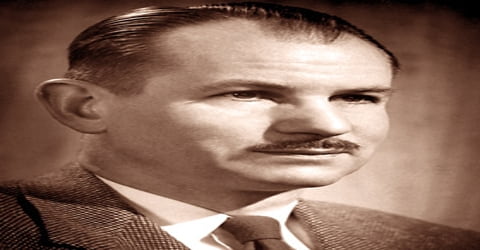
Edwin McMillan, in full Edwin Mattison McMillan, was born in Redondo Beach, California on September 18, 1907. His father, Dr. Edwin Harbaugh McMillan was a physician and his mother was Anne Marie Mattison. His parents were Scottish and hailed from the State of Maryland. He had a younger sister named Catherine Helen. His father-in-law was George Blumer, the dean of the medical school at Yale while his sister-in-law, Molly Blumer was married to Ernest Lawrence, the namesake of the ‘Lawrence Berkeley National Laboratory’.
On October 18, 1908, the family moved to Pasadena, California, where McMillan attended McKinley Elementary School from 1913 to 1918, Grant School from 1918 to 1920, and then Pasadena High School, from which he graduated in 1924. California Institute of Technology (Caltech) was only a mile from his home, and he attended some of the public lectures there. His undergraduate work was first-rate, as demonstrated by his election to Sigma Xi, a scientific research honor society, and Tau Beta Pi, an engineering honor society. He entered Caltech in 1924.
McMillan did his B.Sc. in physics in 1928 from the ‘California Institute of Technology’ where he had done a research project with Linus Pauling. He pursued his M.Sc. from the ‘California Institute of Technology’ in 1929 where did another research project ‘An improved method for the determination of the radium content of rocks’ which was not published. He received his Ph.D. in philosophy from the ‘Princeton University’ in 1933. The subject of his thesis for Ph.D. was on the measurement of the magnetic moment of a proton in a molecular beam.
Personal Life
Edwin McMillan married Elsie Walford Blumer in New Haven, Connecticut, on June 7, 1941. Her father was George Blumer, Dean Emeritus of the Yale Medical School. Her sister Mary was Lawrence’s wife.
Edwin McMillan had one daughter, Ann Bradford and two sons, David Mattison and Stephen Walker from this marriage who was born in 1943, 1945 and 1949 respectively.
Career and Works

In 1932, Edwin McMillan joined the University of California, Berkeley as a ‘National Research Fellow’ before completing his Ph.D. and taught physics while he was there. He started research work under Ernest O. Lawrence at the ‘Radiation Laboratory’ of the ‘University of California’ as a Staff Member at Berkeley in 1934. He helped to design cyclotrons and other equipment. In 1932 McMillan won a richly deserved and highly regarded National Research Council (NRC) fellowship to support his research at any university or research institute in the country.
In 1935, McMillan, Lawrence and Robert Thornton carried out cyclotron experiments with deuteron beams that produced a series of unexpected results. Deuterons fused with a target nuclei, transmuting the target to a heavier isotope while ejecting a proton. Their experiments indicated a nuclear interaction at lower energies than would be expected from a simple calculation of the Coulomb barrier between a deuteron and a target nucleus. Berkeley theoretical physicist Robert Oppenheimer and his graduate student Melba Phillips developed the Oppenheimer-Phillips process to explain the phenomenon. McMillan became an assistant professor in 1936 and an associate professor in 1941. With Samuel Ruben, he also discovered the isotope beryllium-10 in 1940. This was both interesting and difficult to isolate due to its extraordinarily long half-life, about 1.39 million years.
While studying nuclear fission, McMillan discovered neptunium, a decay product of uranium-239. In 1940, in collaboration with Philip H. Abelson, he isolated the new element and obtained final proof of his discovery. Neptunium was the first of a host of transuranium elements that provide important nuclear fuels and contributed greatly to the knowledge of chemistry and nuclear theory. During World War II McMillan also did research on radar and sonar and worked on the first atomic bomb. He served as a member of the General Advisory Committee to the U.S. Atomic Energy Commission from 1954 to 1958.
Following the discovery of nuclear fission in uranium by Otto Hahn and Fritz Strassmann in 1939, McMillan began experimenting with uranium. He bombarded it with neutrons produced in the Radiation Laboratory’s 37-inch (94 cm) cyclotron through bombarding beryllium with deuterons. In addition to the nuclear fission products reported by Hahn and Strassmann, they detected two unusual radioactive isotopes, one with a half-life of about 2.3 days, and the other with one of around 23 minutes. McMillan identified the short-lived isotope as uranium-239, which had been reported by Hahn and Strassmann. McMillan suspected that the other was an isotope of a new, undiscovered element, with an atomic number of 93.
In 1940, with Samuel Reuben, McMillan discovered beryllium-10, and with Philip Abelson, he succeeded in the separation of a product of 2.3-day activity (beta decay) from fissionable uranium-239. McMillan was rightly convinced that the product was produced by transmutation rather than fusion and was, therefore, a new element. He deduced that this was not an element of the manganese family, which was the consensus among chemists, but rather that the product was more like the rare earth elements. Using his chemical expertise, he completed the separation and proved conclusively that this was a transuranium element, the first, and named it neptunium. The daughter product of neptunium, for which the name plutonium was reserved, was expected to be an alpha-active isotope. Although McMillan and Abelson detected some alpha activity, it was too weak to measure.
In February 1941 he was helped by Joseph W. Kennedy, Glenn Seaborg and Arthur Wahl in isolating another trans-uranium element called ‘element 94’ which was named ‘Plutonium’ after McMillan’s practice of calling these elements by the names of planets. During the Second World War, he took leave from the university and worked at the ‘Radiation Laboratory’ at MIT on radar research and then moved to the ‘U. S. Navy Radio and Sound Laboratory’ in San Diego from 1941 to 1942 where he worked on sonar. In November 1942 he moved to Los Alamos to carry out research on implosion for the ‘Manhattan Project’ which produced the first atomic bomb. He was there till 1945.
After the war, McMillan concentrated on accelerators. As particles were accelerated numerous times, they fell out of phase with the accelerating pulse and slowed down. In a flash of insight McMillan determined the conditions that would keep the particles accelerated. He called the device a synchrotron, an accelerator in which the charged particles are accelerated around a fixed circular path by a radio-frequency (rf) potential and held to that path by a time-varying magnetic field. Thus the particles had “phase stability.” This instrument became the standard of high energy physics. Later McMillan learned that Vladimir I. Veksler, a Soviet scientist, had a similar idea and published papers on it. They shared in the recognition of their parallel work, which had happened frequently in science.
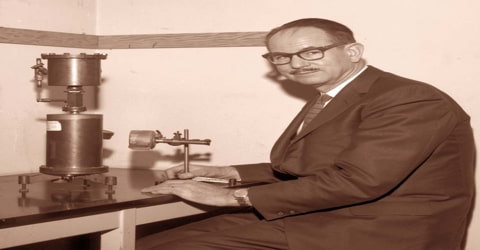
In 1945 McMillan suggested the idea of ‘phase stability’ which was used to develop the ‘synchroton’ and the ‘synchro-cyclotron’ afterward. He became a full professor in the faculty of the ‘University of California’ at Berkeley in 1946. When the Second World War ended, he moved to the ‘Berkeley Radiation Laboratory’ of the ‘University of California’ which came to be known as the ‘Lawrence Berkeley National Laboratory’ later. He became the Associate Director of this laboratory in 1954 and later became the Deputy Director. He served on the board of the ‘General Advisory Committee’ for the ‘Atomic Energy Commission’ from 1954 to 1958. He became the Director of the ‘Lawrence Berkeley National Laboratory’ in 1958.
McMillan was elected to the National Academy of Sciences in 1947, serving as its chairman from 1968 to 1971. He served on the influential General Advisory Committee (GAC) of the Atomic Energy Commission from 1954 to 1958, and the Commission on High Energy Physics of the International Union of Pure and Applied Physics from 1960 to 1967. After his retirement from the faculty at Berkeley in 1974, McMillan spent 1974-75 at CERN, where he worked on the g minus 2 experiments to measure the magnetic moment of the muon.
Awards and Honor
Edwin McMillan received the ‘Research Corporation Scientific Award’ in 1950.
In 1951 McMillan was awarded the Nobel Prize for Chemistry. He was awarded an honorary doctorate in science by the ‘Rensselaer Polytechnic Institute’ in 1961 and an honorary doctorate by the ‘Gustavus Adolphus College’ in 1863. McMillan received the ‘Atoms for Peace Award’ in 1963 along with Professor Vladimir I. Veksler.
Edwin McMillan was awarded the National Medal of Science in 1990.
McMillan was a member of the ‘American Physical Society’, the ‘American Academy of Arts and Sciences’, the ‘National Academy of Sciences’ and the ‘American Philosophical Society’.
Death and Legacy
Edwin McMillan suffered the first of a series of strokes in 1984. He died at his home in El Cerrito, California, from complications from diabetes on September 7, 1991. He was survived by his wife and three children.
Some of his publications include ‘Focusing in Linear Accelerators’ and ‘A Thick Target for Synchrotrons and Betatrons’ that came out on August 24, 1950, and September 19, 1950, respectively. His Nobel lecture ‘The Trans-uranium elements: Early History’ was published on December 12, 1951.
McMillan was one of the world’s great scientists. His interests were expansive, varying from the rocks and shells on the beach to elementary particles to mathematics to the composition of the Sun. His discoveries had a profound effect on various fields of study, from anthropology (carbon-14 dating) to the study of fundamental particles (synchrotron) to defense and unlimited energy (plutonium discovery). He was a great teacher, modest and witty. He enjoyed gardening, smoked a pipe, and drove a 1957 Thunderbird.
McMillan’s ‘Notes on Quadruple Focusing’ was published on February 9, 1956, while ‘Some Thoughts on Stability in Non-linear Periodic Focusing systems’ came out on September 5, 1967, and its addendum was published on March 29, 1968. His gold Nobel Prize medal is in the National Museum of American History, a division of The Smithsonian, in Washington DC.
Information Source:
